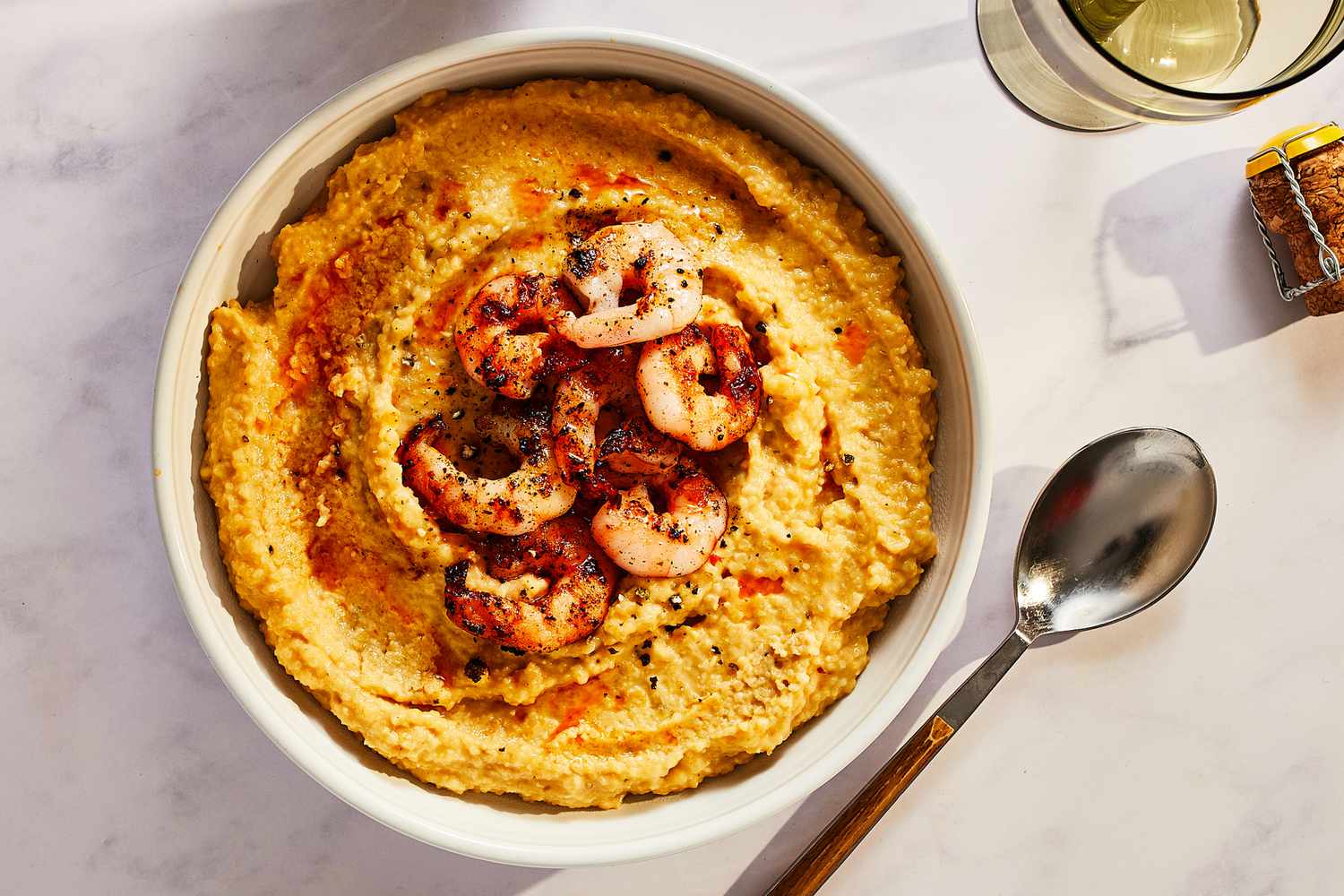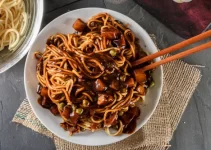Grits have a long history as a central part of Southern cuisine; for several centuries, it was a staple in the region. This Southern dish made from ground corn has transformed from a simple, unassuming food to one of the most diverse and popular dishes in Souther food culture. While the dish’s true historical origin is the native American communities, European settlers were the first to associate grits with the Southern style of cooking.
Now, grits are a comforting and peaceful reminder of the South’s rich culinary history and are used for both everyday cooking and special events. Grits are indeed very diverse as they can be easily adapted to become sweet or salty, served as a dessert or a side dish. This variation has given numerous opportunities to cooks who were eager to experiment with this dish; due to its diversity and gastronomic potential, the humble grits have won the hearts of people passionate about cooking.

A Brief History of The Grits
Grits enjoy a long history as a living piece of the culinary culture created by Native American nations. Even before the arrival of Europeans, the indigenous people of the Southeast used corn as a major food source and employed various methods to process and consume it. Grinding dried corn into a grainy meal was one of these methods, and over time it evolved into the well-known dish called grits.
European settlers to North America quickly adopted this versatile grain and for centuries used it in their meals. Before the dish was appropriated into the southern US cuisine. Grits became a signature dish of the South, especially in the Lowcountry zone of South Carolina and Georgia. Where grits were added to various seafood and plant-based dishes. By the end of the 1900s and beginning of the 20th century, grits were additionally an emblem of the South as a whole, as numerous poor white and black dwellers of both rural and urban homes depended on this cheap and filling food.
Presently, grits continue to be a well-regarded dish within southern cuisine and an informal signature meal of the region. As two centuries ago, grits link multiple American cultures and represent shared history and preferences.
What are The Grits?
Grits enjoy a long history as a living piece of the culinary culture created by Native American nations. Even before the arrival of Europeans, the indigenous people of the Southeast used corn as a major food source and employed various methods to process and consume it. Grinding dried corn into a grainy meal was one of these methods, and over time it evolved into the well-known dish called grits. European settlers to North America quickly adopted this versatile grain and for centuries used it in their meals, before the dish was appropriated into the southern US cuisine.
Grits became a signature dish of the South, especially in the Lowcountry zone of South Carolina and Georgia, where grits were added to various seafood and plant-based dishes. By the end of the 1900s and beginning of the 20 th century, grits were additionally an emblem of the South as a whole, as numerous poor white and black dwellers of both rural and urban homes depended on this cheap and filling food. Presently, grits continue to be a well-regarded dish within southern cuisine and an informal signature meal of the region. As two centuries ago, grits link multiple American cultures and represent shared history and preferences.
Cooking Techniques
-
1 cup grits
-
4 cups water, milk, or broth
-
Salt and pepper, to taste
-
2 tablespoons butter (optional)
Instructions:
-
In a medium saucepan, bring the liquid to a boil.
-
Slowly whisk in the grits, stirring continuously to prevent clumping.
-
Reduce the heat to low and simmer, stirring occasionally, for 20-30 minutes, or until the grits are thick and creamy.
-
Season with salt and pepper, and stir in butter, if desired.
-
Serve warm, topped with your favorite sweet or savory ingredients.
-
Stovetop: The traditional method, as described above, allows for the most control over texture and flavor. Stirring frequently and cooking over low heat ensures even cooking and prevents scorching.
-
Microwave: For a quick and convenient option, combine grits and liquid in a microwave-safe bowl, and cook on high for 2-3 minutes, stirring every 30 seconds. Allow to rest for 1-2 minutes before serving.
-
Slow cooker: Combine grits and liquid in a slow cooker, and cook on low for 6-8 hours or on high for 3-4 hours, stirring occasionally. This method is ideal for hands-off cooking or keeping grits warm for an extended period.
-
Whisk continuously while adding grits to the boiling liquid to prevent clumps.
-
Cook over low heat and stir frequently to ensure even cooking and prevent scorching.
-
Add more liquid as needed to achieve a creamy consistency, keeping in mind that grits will thicken as they cool.
-
Allow cooked grits to rest for a few minutes before serving, giving them time to absorb any remaining liquid and reach their final consistency.

Serving and Enjoying Grits
Upon rising, a warm bowl of creamy grits accompanied by a fried or poached egg, crispy bacon, and shredded cheese may be th e perfect way to begin the day. Alternatively, sweeten with honey, brown sugar, or fresh fruit for an even better morning pleasure. For a quick and delicious lunch, combine already cooked grits with sauteed vegetables, such as spinach, onions, bell peppers, or protein, such as grilled chicken or tofu, then sprinkle with grated cheese and a dollop of sour cream. Meanwhile, for supper, you may want to make delicious shrimp and grits, a southern classic in many respects. Prepare the grits with a broth or milk foundation, and place well-seasoned shrimps, crumbled bacon, and green onions on top. Accompanied by a side of braised greens or roasted vegetables, it is a wonderful meal.
Eating The Grits
-
Cheese – Grate some cheddar, Parmesan, or Gruyère into your grits for a creamy and savory flavor.
-
Bacon – Sprinkle a few crumbled bacon or pancetta pieces on top of your dish for an extra savory, smoky flavor.
-
Shrimp – Sauté some shrimp with butter, garlic, and lemon and serve it on top of creamy grits for a new tasty dish.
-
Vegetables – Add caramelized onions, tomatoes, or sautéed mushrooms into your grits to give added flavor and texture.
Options for grits that combine into the field of the savory are incredibly mind-boggling. In the American South, a familiar partner is tricks, for example, are fried chicken or catfish. However, in the Southwest, grits may transform a sweet dish according to the country’s desires and needs. Grits take on various roles in other cuisines too. Cornmeal indistinguishable from Jamaican porridge, which is sweetened with condensed dairy sugar, enjoys nuance with nutmeg and cinnamon. Polenta, a relative or brother, served Italians with sauce, contributes to the processes in the beginning. All these examples of serving ideas identifying something are the beginning of a variety of possibilities. Possible uses in cooking only to show this wide array of methods for using grits.
Nutritional Value and Health Benefits
Health benefits: Grits contain several essential vitamins and minerals, such as thiamin, folate, iron, and antioxidants like lutein and zeaxanthin, which are vital for healthy eyes. Moreover, if prepared with milk or broth, grits also offer protein, calcium and vitamin D. Folic acid also helps in the manufacture of red blood cells. They also fulfill some of the body’s most basic needs. Dietary fibers in grits help maintain sufficient digestion It also contains dietary fiber. Foods low in cholesterol and dietary fiber are good for the heart, intestine, and can help with proper digestion. Like other complex carbohydrates, grits provide a slower and more consistent energy release than simple sugars.
This means they keep blood sugar levels even and keep energy going all day long. People with celiac disease and gluten intolerance can safely eat grits, which are made from corn and are thus gluten-free. Nonetheless, the health value of the overall food will be determined by the volumes of toppings, such as butter or cheese, which are often added. Congruently, excessive amounts of cheese or butter consumed with the grits will increase the overall calorie intake. For a healthful alternative, mix the grits with low-fat milk or broth and possibly use nutrient-rich substitutes such as sauteed vegetables instead of toppings. Grit is, thus, a highly nutritious complement to the menu.




